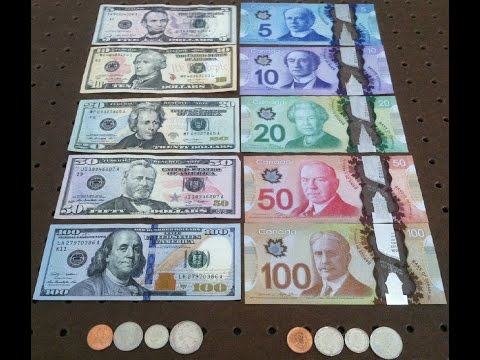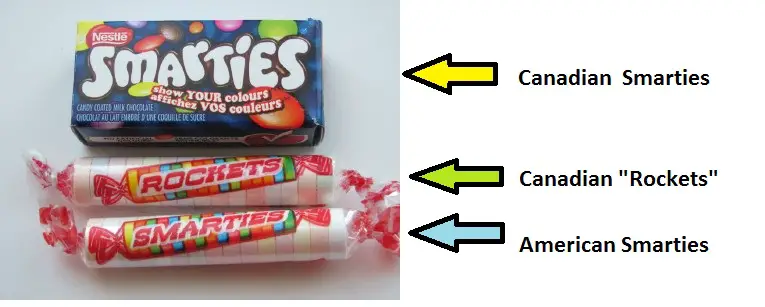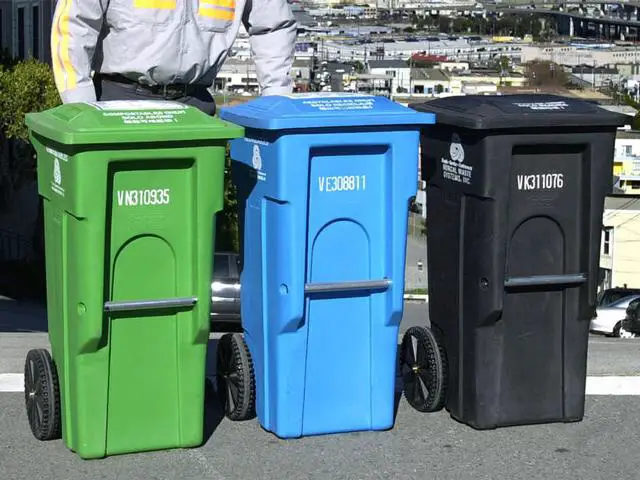As a Canadian, I have always seen the United States as Canada’s brother country. Canadians and Americans hold very similar values and have a multitude of diverse cultures. The leaders of these two nations may be in conflict with the trade war in full effect, but the countries’ citizens can still stand shoulder-to-shoulder with one another.
Even though both of these countries have their own set of stereotypes associated with them, it is pretty difficult to identify someone as Canadian or American because of the countries’ commonalities. While Canadians are known to be polite people, there are just some things that don’t make sense about the United States that need to be addressed.
Here are eight things that Canadians find weird about Americans.
1. American money
If you line up all the American bills side by side, what do you notice? All the bills are the same color and are made out of paper. That may seem normal to Americans, but in Canada, American money is considered unappealing. Each Canadian bill is a different color, and all of it is made out of plastic. You can try and rip Canadian cash, but you’ll fail every time.

American money also consists of the dollar bill, which is foreign territory for Canadians. Holding around a bunch of dollar bills is too much to handle. You could be hitting up a strip club with all the cash you have on hand. Dollar coins, or “loonies” (because there is a loon on the coin’s face), in Canada are much easier to identify than having to sift through all the same-colored cash that Americans use.
2.(Lack of) The metric system
When I first started university in the U.S., I had no idea how oblivious Americans were to the metric system. I had to learn an entirely new language of all the different measurements the U.S. used for the weather, gas, speed and distance. Gas is sold by the liter. The speed limits are shown in miles per hour. GPS coordinates are in feet. Temperature is in Fahrenheit.
Like many other countries around the world, Canada sells gas by the gallon, shows speed limits in kilometers per hour, GPS coordinates in meters and temperature in Celsius. Having to convert to the new measurement system in the U.S. is similar to translating every other word when you’re trying to learn a language. It can be frustrating at times, but at least you’re learning something!
Me, a Canadian: The metric system is easy. 100mm = 1cm. 100cm = 1m. Super easy.
You, an American: The imperial system is easy. 1 Flapjangle = 7.2 Flogboggles. 29 Flogboggles = 3.97 Dingmarkles. Super easy.
— 𖤐 Father Red McGee 𖤐 (@drinksmcgee) December 27, 2017
Fun fact: Take half of the Fahrenheit temperature and subtract it by 30 to easily convert temperature from Fahrenheit to Celsius.
3. KD and Smarties
According to Canadians, Kraft Mac & Cheese is the weirdest way to describe Kraft Dinner. The golden brand for Mac & Cheese can be simplified down to just two letters: KD. Kraft Dinner in Canada and the U.S. are the same, but the way Americans describe it doesn’t sit well. In Canada, KD is the way to describe any Kraft-brand dinner. Any Canadian will know exactly what you are talking about when you say, “I’m making KD tonight.”

While I’m on the topic of food,another anomaly in the U.S. are Smarties — the colorful candy rolls made of sugar. If you go to Canada and ask someone for Smarties, that’s not what you’re going to get. Instead, you’ll get Canadian Smarties, which are colorful sugar-coated chocolates similar to M&M’s. To the surprise of many Americans, the Smarties in Canada are called Rockets. The chalky-flavored candy looks and is made the exact same in both of these countries but have completely different names.
4. No green bin!
About a decade ago, Canada was blessed with the green bin, which is a container where you put all of your compost in. Food scraps, paper towels and anything that is biodegradable goes into the green bin. Alongside the blue recycling bins, the green bins are picked up on a separate day of the week than regular trash. Everything in the green bins goes through the composting process to eventually produce nutrient-rich soil and fertilizer for farms across the country or even for personal use in a home garden.

The U.S. is not the greatest country in reducing, reusing and recycling. Single-stream recycling seems like one of the only ways that Americans sort their trash; some Americans don’t recycle at all! Not having a green bin to put your compost in is strange, but then again, there are some places in Canadian cities that don’t have a plan in place to compost.
5. Color vs. Colour
English is a national language spoken in Canada and the U.S., but there is a difference between Canadian English and American English. In the U.S., some words such as “color,” “favorite” and “center” are spelled slightly different in Canada (colour, favourite and centre). Although Americans believe that their way of spelling is right, American English is the only branch of the English language that is different from the rest of the English—speaking countries.
Fun Fact:The U.S. tends to spell their words similar to their phonetic spelling whereas Canadian English leans more towards the Commonwealth countries because Canada was a part of the British Empire during a period in history.
6. The portion sizes
Quantity over quality is what American fast food restaurants live for. If you want a hefty meal, all you have to do is order a large drink because you’ll most likely have it for the rest of the day. When you eat at a restaurant, you go in with the intention of leaving with leftovers. Unless you are starving and want to eat too much food, you’ll go home with lunch for the next day.
Americans are always dreaming big. Three patties on a burger or a double gulp slurpee, which holds a crazy 64 ounces, make Canadian jaws drop to the floor. The portion sizes in the U.S. are absolutely insane, and it should be no surprise that obesity in America is a major issue. Canadians are guilty of having an obesity issue as well, but the amount of unhealthy food that people consume in Canada pales in comparison to America
7. Freshman, sophomore, junior, senior
I’ve never understood why Americans used the words freshman, sophomore, junior and senior to describe their year in high school and college. When someone looks older or younger than their age, it can be confusing to figure out if they’re a sophomore in high school or college. Canadians say that they’re in grade 9-12 when referencing their year in high school and first to fourth year when referencing their year in university.
Fun Fact: If you compare these Canadian and American terms, you’ll see that Canadians use numbers whereas Americans have derived their own names from Latin and Greek terms that describe the stereotypical personalities of these years.
8. Absolute ignorance of the rest of the world.
There are many Americans that keep up with world news, but there are also a lot of people in the U.S. who are ignorant to the basic facts of other countries, which includes their neighboring country. Canadians know that Americans have states and a president widely known to cause trouble , but the same can’t be said for Canada.
Some Americans believe that Canada has states and a president as well. Wrong. Canada has 13 provinces and territories in addition to a prime minister.
Fun Fact: Most countries’ titles actually have the title of prime minister rather than president. People in the U.S. are taken aback most of the time about the different terminology Canadians use for certain things, but funnily enough, the U.S. is the odd country out from the rest of the world.

















